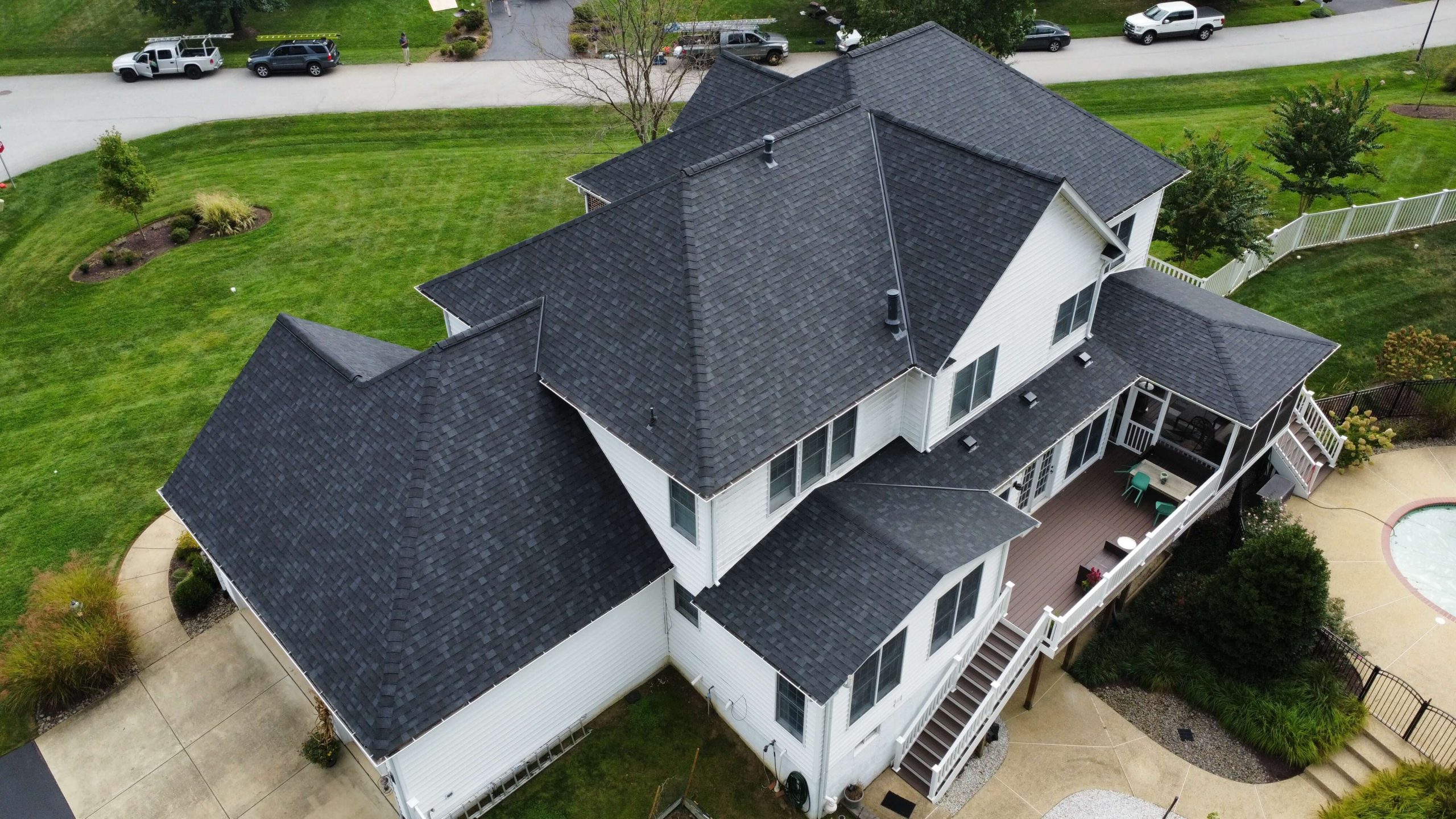When we think about protecting our homes from water damage, the focus often goes straight to the roof. While the roof is undoubtedly crucial, it's essential not to overlook the unsung heroes of water damage prevention: gutters and siding. These unassuming components play a pivotal role in safeguarding your home's structural integrity. In this blog, we'll explore all three in their respective roles in protecting your property.
Gutters: Channeling Away Trouble
Gutters are like the circulatory system of your home, channeling rainwater away from your roof and foundation. Their role in preventing water damage cannot be overstated.
Diverting Rainwater: Gutters capture rainwater as it flows off your roof and direct it to downspouts, preventing it from cascading down the sides of your home.
Protecting the Foundation: Well-maintained gutters ensure that water doesn't accumulate near your home's foundation, preventing costly foundation damage and potential flooding in your basement.
Preventing Erosion: Properly functioning gutters prevent soil erosion around your property, preserving your landscaping and preventing land settling issues.
Safeguarding Siding: Gutters help keep your siding dry, preventing water-related damage such as rot, mold, and mildew growth.
Common types of gutters used in residential and commercial construction include:
K-Style Gutters: These gutters resemble the letter "K" when viewed from the side and are one of the most popular gutter styles. They come in various sizes and are known for their decorative appearance and ability to hold more water compared to traditional half-round gutters.
Half-Round Gutters: As the name suggests, these gutters have a semi-circular shape when viewed from the side. They are often seen in historic or traditional architecture and are typically made of materials like aluminum, copper, or steel.
Box Gutters: Box gutters are integrated into the roof's structure and are often concealed. They are commonly found on commercial buildings and older homes with flat or low-pitched roofs.
Fascia Gutters: These gutters are attached directly to the fascia board, which is the horizontal board that runs along the eaves of a roof. They are a popular choice for their simplicity and ease of installation.
Seamless Gutters: Seamless gutters are custom-made on-site to fit the specific dimensions of a building. They have fewer joints than traditional gutters, reducing the potential for leaks and making them easier to maintain.
Vinyl Gutters: Vinyl gutters are lightweight and affordable, making them a popular choice for budget-conscious homeowners. They are available in various colors and are relatively easy to install.
Aluminum Gutters: Aluminum gutters are corrosion-resistant and lightweight, making them a durable and low-maintenance choice. They are available in a variety of colors.
Copper Gutters: Copper gutters are known for their aesthetic appeal and durability. Over time, they develop a distinctive patina that adds to their charm. Copper gutters are often chosen for high-end or historic homes.
Steel Gutters: Steel gutters are sturdy and resistant to damage, making them suitable for areas with heavy snowfall or severe weather conditions. They can be painted to match the home's exterior.
Gutter Guards: While not a type of gutter, gutter guards are often installed with gutters to prevent debris like leaves and twigs from clogging the system. They help maintain proper water flow and reduce the need for frequent gutter cleaning.
Siding: Your Home's Protective Shell
Siding serves as both an aesthetic and protective element for your home's exterior. It's your home's first line of defense against the elements:
Weather Resistance: Siding materials are designed to withstand harsh weather conditions, protecting your home from wind, rain, snow, and UV rays.
Insulation: Siding can provide additional insulation, helping to regulate indoor temperatures and reduce energy costs.
Aesthetic Appeal: Siding enhances the curb appeal of your home, making it visually appealing and potentially increasing its resale value.
Preventing Water Intrusion: Properly installed and maintained siding acts as a barrier against water intrusion, preventing water from penetrating the interior walls of your home.
Common types of siding used in residential construction include:
Vinyl Siding: Vinyl siding is a popular and cost-effective option. It comes in a variety of colors and styles, is low-maintenance, and is known for its durability and resistance to pests and rot.
Wood Siding: Wood siding offers a natural and timeless look. Cedar, pine, and redwood are common choices. It can be painted or stained to achieve the desired aesthetic, but it requires regular maintenance to prevent rot and insect damage.
Fiber Cement Siding: Fiber cement siding is a durable and low-maintenance option that mimics the look of wood, stucco, or masonry. It is resistant to fire, pests, and rot and can withstand various weather conditions.
Stucco Siding: Stucco siding is a cement-based material that is applied as a wet paste and then hardens to create a durable and weather-resistant surface. It is commonly used in southwestern and Mediterranean-style architecture.
Brick Siding: Brick siding provides a classic and timeless appearance. It is highly durable, fire-resistant, and low-maintenance. Brick siding can be used as the primary exterior or as an accent in combination with other materials.
Stone Veneer: Stone veneer siding offers the look of natural stone at a fraction of the cost and weight. It is available in various styles and colors and is often used to create rustic or traditional aesthetics.
Metal Siding: Metal siding, typically made of aluminum or steel, is durable and resistant to pests and rot. It is often used in modern and industrial designs and can be painted or coated for added protection.
Engineered Wood Siding: Engineered wood siding is a composite material made of wood fibers, wax, and resin. It provides the appearance of natural wood with improved durability and resistance to moisture and pests.
Cedar Shake Shingles: Cedar shake shingles offer a rustic and traditional look. They are made from cedar and can be stained or painted. Proper maintenance is essential to prevent decay and insect infestations.
Composite Siding: Composite siding combines various materials to create a durable and low-maintenance product. It can mimic the appearance of wood, stucco, or other materials while offering improved performance.
The Benefits of Well-Maintained Gutters and Siding
Now that we've highlighted the critical roles gutters and siding play in protecting your home, let's explore the benefits of keeping them well-maintained:
Extended Lifespan: Regular maintenance and cleaning can extend the lifespan of your gutters and siding, saving you money on costly replacements.
Preventing Water Damage: By diverting rainwater and preventing water intrusion, well-maintained gutters and siding protect your home's structure and interior from water damage.
Energy Efficiency: Properly maintained siding can improve your home's energy efficiency by providing additional insulation and reducing drafts.
Curb Appeal: Well-maintained siding and gutters contribute to a well-kept, attractive appearance for your home, boosting its curb appeal and potential resale value.
Maintenance Tips for Gutters and Siding
To enjoy the benefits of well-maintained gutters and siding, here are some essential maintenance tips:
Gutters:
- Clean gutters and downspouts regularly, removing leaves, debris, and blockages.
- Inspect for loose or damaged gutters and repair them promptly.
- Ensure that gutters are properly sloped to allow for efficient water flow.
- Consider installing gutter guards to reduce debris buildup.
Siding:
- Regularly inspect siding for signs of damage, such as cracks, peeling paint, or mold.
- Wash siding with a mild detergent and a soft brush or pressure washer to remove dirt and mildew.
- Repair or replace damaged siding promptly to prevent further deterioration.
- Consider applying a fresh coat of paint or sealant to protect and enhance the appearance of your siding.
When it comes to safeguarding your home from the elements, siding and gutters play crucial roles. However, they can't truly fulfill their potential without the foundation of a great roof. Your roof binds these elements together, ensuring your home remains protected, comfortable, and resilient.
Trusting Roofing Pros for Your Gutters
When it comes to the well-being of your home's exterior, entrusting a roofing company with your gutter and siding needs is a wise choice. Roofing companies, by nature, have an in-depth understanding of the entire roofing system and how it interacts with gutters and siding. At Black Anchor Roofing, we possess the expertise to assess the condition of your roofing, gutters, and siding comprehensively, ensuring that all components work in harmony to protect your home. Our roofing professionals are skilled in detecting potential issues that may not be apparent to the untrained eye, and they have the experience to address any problems promptly and effectively. By choosing Black Anchor Roofing for your roofing, gutter, and siding needs, you benefit from a holistic approach to home exterior maintenance that guarantees long-lasting protection and peace of mind.

